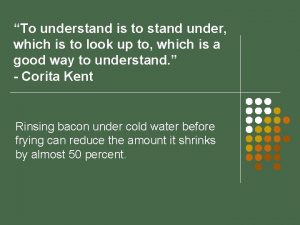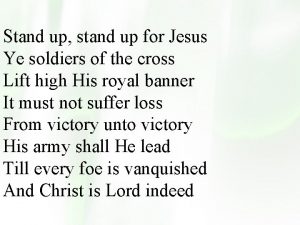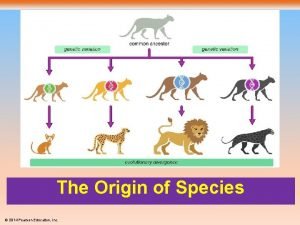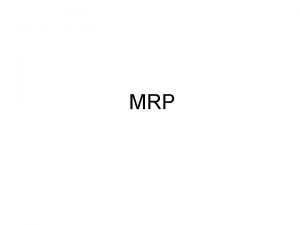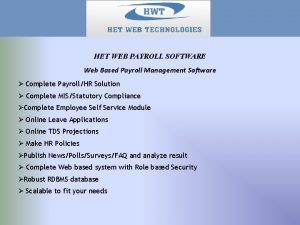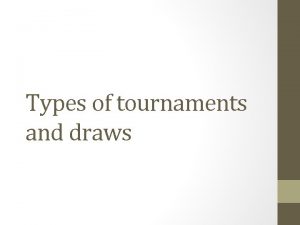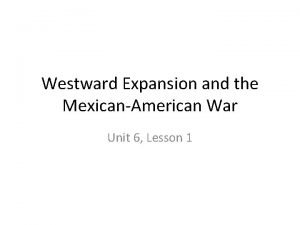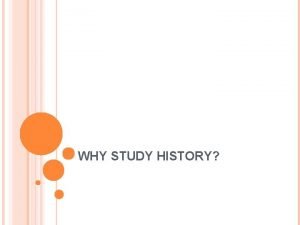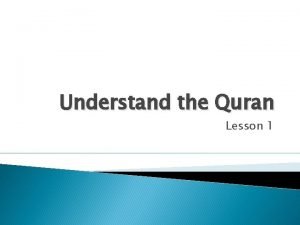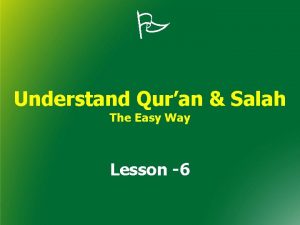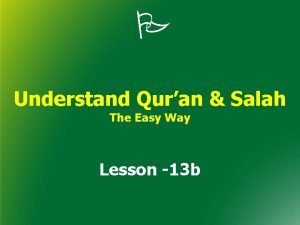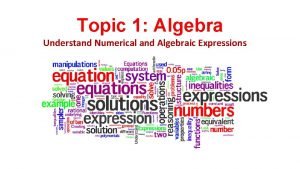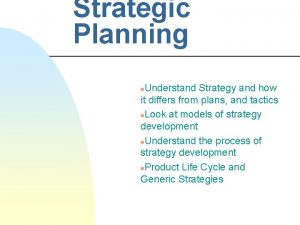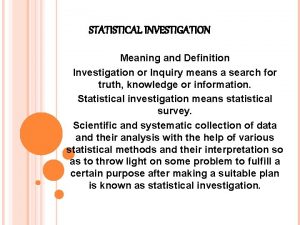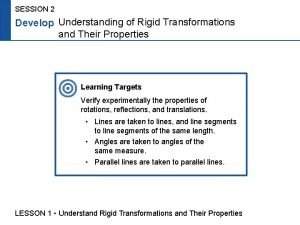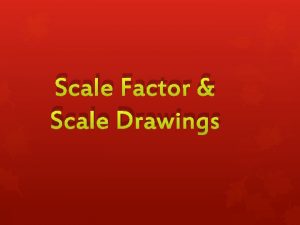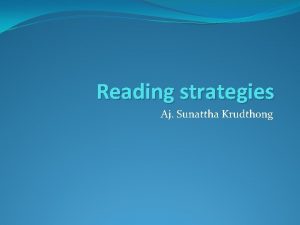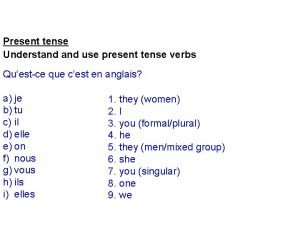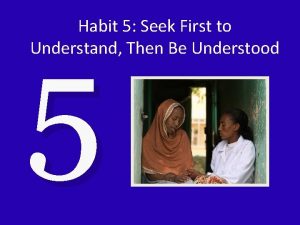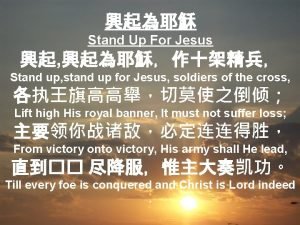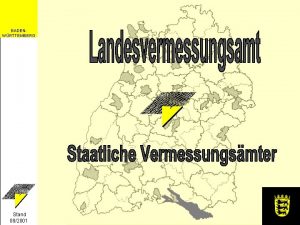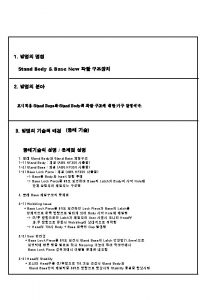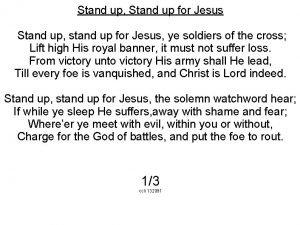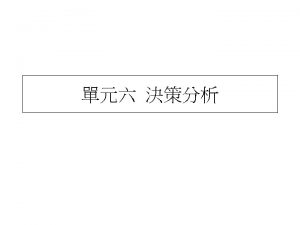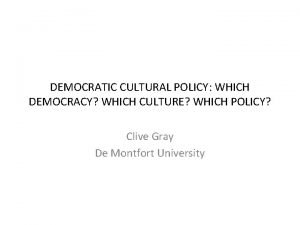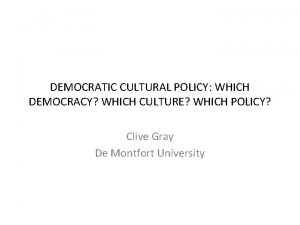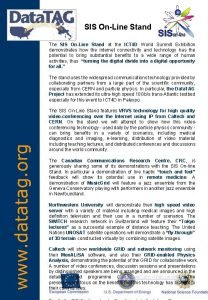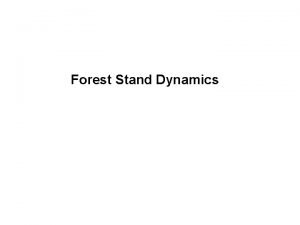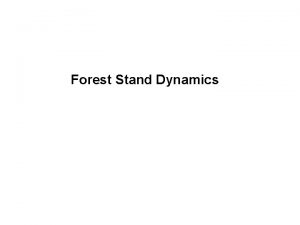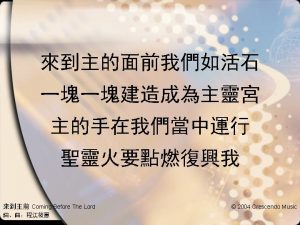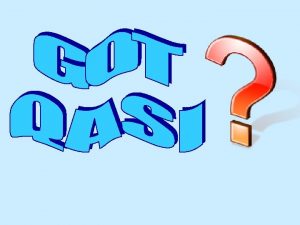To understand is to stand under which is



























- Slides: 27

“To understand is to stand under, which is to look up to, which is a good way to understand. ” - Corita Kent Rinsing bacon under cold water before frying can reduce the amount it shrinks by almost 50 percent.

The Vietnam War: The French-Indochina War and Geneva 1946 -1960

French Indochina War l In 1946, The Viet Minh launched a rebellion against the French authority governing the colonies of Fr. Indochina. l The first few years of the war involved a low-level rural insurgency against Fr. authority. However, after the Chinese communists reached the N. border of Viet. in 1949, the conflict became a conventional war between 2 armies equipped with modern weapons supplied by the 2 superpowers (Am. and the S. U. ). l l The Indochinese conflict broke out in Haiphong after a conflict of interest in import duty at Haiphong port between Viet Minh gov. and the Fr.

Haiphong

French Indochina War l On Nov. 23, 1946 the Fr. fleet began a naval bombardment on the city of Haiphong killing 2, 000 6, 000 Viet. civilians in an afternoon. l The Viet Minh quickly agreed to a cease-fire and left the city: There was no intention among the Viet. to give up though, and Gen. Vo Nguyen Giap soon brought up 30, 000 men to attack the city. l l Although the Fr. were outnumbered, their better weaponry and naval support made any Viet Minh’s attack impossible.

www. photius. com/countries/vietnam/national_se. . .

French Indochina War l In Dec. , 1946, hostilities broke out in Hanoi between the Viet Minh and the Fr. and Ho Chi Minh was forced to evacuate the capital in favor of remote mountain areas; guerrilla warfare ensued with the Fr. in control of almost everything except very remote areas. l Fighting continued from 1947 -1949. l In 1949, Fr. officially recognized the "independence" of the State of Viet. within the Fr. Union under Bao Dai. However, Fr. still controlled all defense issues and all foreign relations as Viet. was only an independent state within the Fr. Union. The Viet Minh quickly denounced the gov. and stated that they wanted "real indep. , not Bao Dai indep. "

“Independent” Vietnam Laos Cambodia www. zum. de/. . . /hista tlas/seasia/haxvietna m. html

A French Foreign Legion unit patrols in a communist controlled area.

1950 l l l In 1950, the Democratic Republic of Viet. (Viet Minh), China, and the S. U. recognized each other diplomatically. U. S. President Harry S. Truman countered by recognizing the Fr. puppet gov. of Viet. : Washington feared that Hanoi was a pawn of Communist China and, by extension, Moscow. This view clashed with the long historical antipathy between the 2 nations: "Vietnam a part of the Chinese expansionist game in Asia? For anyone who knows the history of Indochina, this is incomprehensible. “ Nevertheless, Chinese support was very important to the Viet Minh's success, and China largely supported the Viet. Communists through the end of the war. The outbreak of the Korean War in 1950 marked a decisive turning point: a colonial war was transformed into another example of communist expansionism (Am. perspective).

1950 l In 1950, the U. S. arrived to screen Fr. requests for aid, advise on strategy and train Viet. soldiers. l By 1954, the U. S. had supplied 300, 000 small arms and spent one billion dollars in support of the Fr. military effort (Eisenhower admin. = 80% of the war cost). l The Viet Minh received crucial support from the S. U. and China. l Throughout the conflict, U. S. intelligence estimates remained skeptical of Fr. chances of success. l The Battle of Dien Bien Phu marked the end of Fr. involvement in Indochina.

The Battle of Dien Bien Phu: March 13 – May 7, 1954 Dien Bien Province

The Battle of Dien Bien Phu: March 13 – May 7, 1954 l The battle occurred between March and May 1954, and culminated in a massive French defeat that effectively ended the Fr. Indochina War. l Dien Bien Phu was "the first time that a non-European colonial independence movement had evolved through all the stages from guerrilla bands to a conventionally organized and equipped army able to defeat a modern W. occupier in pitched battle. " l As a result of blunders in the Fr. decision making process, the Fr. undertook the creation of an air-supplied base at Dien Bien Phu, deep in the hills of Vietnam. l Its purpose was to cut off Viet Minh supply lines into the neighboring Fr. protectorate of Laos, at the same time drawing the Viet Minh into a battle that would cripple them.

The Battle of Dien Bien Phu: March 13 – May 7, 1954 l l l However, the Viet Minh, under Gen. Vo Nguyen Giap, surrounded and besieged the Fr. , who were unaware of the Viet Minh's possession of heavy artillery and their ability to move such weapons to the mountain crests overlooking the Fr. encampment. The Viet Minh occupied the highlands around Dien Bien Phu, and were able to fire down accurately onto Fr. positions. Tenacious fighting on the ground ensued, reminiscent of the trench warfare of WWI. The French repeatedly repulsed Viet Minh assaults on their positions; supplies and reinforcements were delivered by air, although as the Fr. positions were overrun and the antiaircraft fire took its toll, fewer and fewer of those supplies reached them. After a 2 month siege, the garrison was overrun and most Fr. surrendered; the battle is won for the Viet Minh.

The French disposition at Dien Bien Phu, as of March 1954. The French took up positions on a series of fortified hills. The southernmost, Isabelle, was dangerously isolated. The Viet Minh positioned their 5 divisions (the 304 th, 308 th, 312 th, 316 th, and 351 st) in the surrounding areas to the north and east. From these areas, the Viet Minh had a clear line of sight on the French fortifications and were able to accurately rain down artillery on the French positions.


Geneva Conference (1954) The Geneva Conference (April 26 – July 21, 1954) was a conference between many countries that agreed to end hostilities and restore peace in Fr. Indochina and Viet.

Geneva Conference (1954) l l l l It produced a set of treaties known as the Geneva Accords, signed on behalf of Fr. by Pierre Mendès-France and of N. Viet. by Pham Van Dong. The Geneva Accords included: A declaration granting independence to Indochina from Fr. End of hostilities and foreign involvement (or troops) in internal Indochina affairs. N. and S. zones were drawn to facilitate the cessation of hostilities between the Viet. and Fr. forces. The Viet Minh retreated N. of the ceasefire line, and awaited unification through free elections (July 1956). An International Control Commission was set up to oversee the implementation of the Geneva Accords, but it was basically powerless to ensure compliance. The agreement was between Cambodia, the Democratic Republic of Viet. , Fr. , Laos, China, the State of Viet. , the S. U. , and the U. K. The U. S. refused to participate in the conference or recognize the accords.

www. zum. de/. . . /hista tlas/seasia/haxvietna m. html

France and Dong

Post Geneva, The Diem Era: 1955– 1963

Post Geneva, The Diem Era: 1955– 1963 l As dictated by the Geneva Conference, the division of Viet. was meant to be only temporary (free elections) on July 20. l Much like Korea, the agreement stipulated that the two military zones were to be separated by a temporary demarcation line (known as the Demilitarized Zone or DMZ). l The President of South Vietnam, Ngo Dinh Diem, declined to hold elections. l This called into question the U. S. commitment to democracy in the region, but also raised questions about the legitimacy of any election held in the communist-run N.

Post Geneva, The Diem Era: 1955– 1963 l The cornerstone of U. S. policy was the Domino Theory. This argued that if S. Viet. fell to communist forces, then all of SE Asia would follow. l Some argued that if communism spread unchecked, it would follow them home by first reaching Hawaii and follow to the W. Coast of the U. S. It was better, therefore, to fight communism in Asia, rather than on American soil. (Policy of Containment). l Thus, the Domino Theory provided a powerful motive for the American creation of a client state in S. Vietnam

Post Geneva, The Diem Era: 1955– 1963 l l l Ngo Dinh Diem was chosen by the U. S. to lead S. Viet. because he was: A devout Roman Catholic Fervently anti-communist and was "untainted" by any connection to the French. Historian Luu Doan Huynh notes, however, that “Diem represented narrow and extremist nationalism coupled with autocracy and nepotism. ” During his (rigged election) presidency, Diem launched campaigns to destroy political opposition from the Cao Dai religious sect, the Buddhist Hoa Hao, the Binh Xuyen organized crime group, and Communists (labeled Viet Cong).

Ho Strikes Back: Insurgency in the South, 1956 -1960 l In response to the Diem admin. corruption, persecution, and oppression Ho authorized Viet Minh in the S. to conduct low level insurgency. l 400 gov. officials were assassinated in 1957 alone, and the violence gradually increased. l In Jan. 1959, under pressure from S. cadres who were being targeted by Diem's secret police, the N's Central Committee issued a secret resolution authorizing an "armed struggle. "

Ho Strikes Back: Insurgency in the South, 19561960 l l l The authorization caused the S. Viet Minh to begin large scale operations against the S. Viet. military. In response, Diem enacted tough new anti-communist laws. However, N. Viet. supplied troops and supplies in earnest, and the infiltration of men and weapons from the N. began along the Ho Chi Minh Trail. Observing the increasing unpopularity of the Diem regime, on Dec. 12, 1960, Hanoi authorized the creation of the Ntl. Front for the Liberation of S. Vietnam (NLF): The NLF was made up of 2 distinct groups: nationalists and communists. The principal objective of the NLF was to seize political power through a popular insurrection—military operations were secondary. The NLF emphasized patriotism, honesty and good gov. , while promising the reunification of Viet. and an end to Am. influence.

 Understand stand under
Understand stand under To understand recursion you must understand recursion
To understand recursion you must understand recursion Stand up for jesus
Stand up for jesus Small head fat body
Small head fat body Describe the conditions under which new species may arise.
Describe the conditions under which new species may arise. Mrp
Mrp Web based payroll software
Web based payroll software Ladder style tournament example
Ladder style tournament example Texas is under which country
Texas is under which country Jesus youre my firm foundation
Jesus youre my firm foundation History helps us understand people and societies.
History helps us understand people and societies. Quran easy to understand
Quran easy to understand Understand quran
Understand quran Understand quran and salah the easy way
Understand quran and salah the easy way Understand algebraic expressions
Understand algebraic expressions Understand your role care certificate
Understand your role care certificate Generic strategies examples
Generic strategies examples Definition of statistical investigation
Definition of statistical investigation Understand quran and salah the easy way pdf
Understand quran and salah the easy way pdf Abcye
Abcye How to understand scale drawings
How to understand scale drawings Opera refers to a dramatic art form originating in europe
Opera refers to a dramatic art form originating in europe Qualitative and quantitative research
Qualitative and quantitative research Je, tu, il, elle, nous, vous, ils, elles endings
Je, tu, il, elle, nous, vous, ils, elles endings What is meant by the term people in media
What is meant by the term people in media Habit number 5
Habit number 5 Make me understand
Make me understand Ce timeline
Ce timeline
